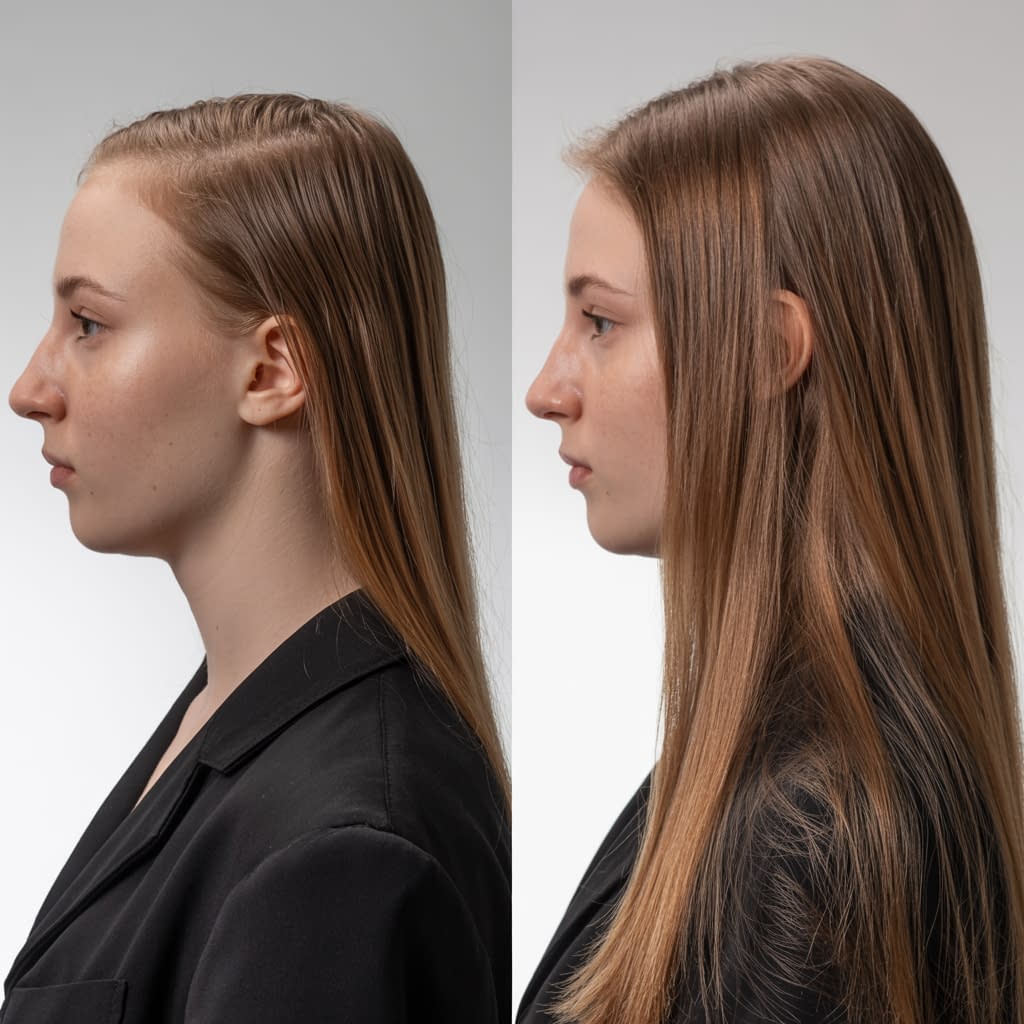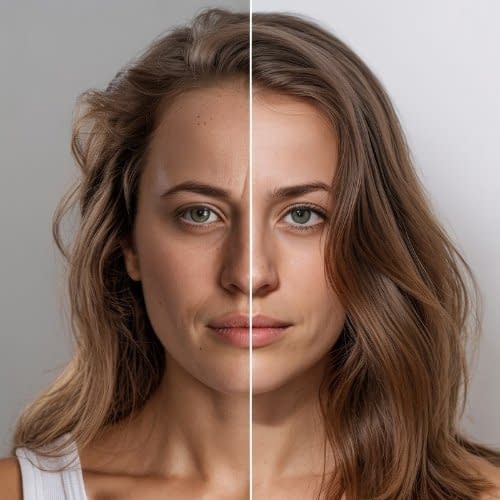You want hair that doesn’t look like it’s scheduled a mass exodus. Good. Shampoo ads lie. Genetics, stress, diet, and sloppy routines are the usual suspects. Below is a brutally practical, step-by-step guide for each major area that actually helps reduce hair fall and supports healthier hair — without miracle cures, magic pills, or smelling like a potion shop. Read it, pick what fits, and apply it consistently.
Understanding Hair Loss: Causes You Should Know

Short version: hair falls out for reasons that fall into three buckets — genetics, health/medical factors, and lifestyle/environmental factors. Know which bucket your hair is in and treat the cause, not the symptom.
Main causes (plain and practical)
- Genetic pattern hair loss (androgenetic alopecia) — family history, gradual thinning, usually predictable. See a specialist if this runs in your family.
- Telogen effluvium — hair shedding after stress, illness, childbirth, or drastic diet change. Often temporary (months).
- Alopecia areata — immune system attacks hair; unpredictable patches. Needs medical advice.
- Nutritional deficiencies — iron, protein, vitamin D, B12, zinc, biotin deficiency sometimes show up as hair loss.
- Hormonal problems — thyroid disease, PCOS, changes in estrogen/testosterone can trigger hair loss.
- Traction alopecia — caused by tight hairstyles (ponytails, braids, extensions).
- Scalp conditions — dandruff, fungal infections, psoriasis can damage follicles.
- Medications / medical treatments — chemo, certain blood thinners, antidepressants can cause shedding.
How to figure out which applies to you (step-by-step)
- Check timing & pattern. Sudden diffuse shedding after an illness = telogen effluvium. Gradual thinning with family history = likely androgenetic.
- Look for patches. Round bald patches = alopecia areata. Scaly, itchy scalp = possible infection or dermatitis.
- Review recent events. Major stress, crash diets, surgery, or new meds in the last 3 months? That’s a clue.
- Get basic tests. If it’s more than cosmetic and persists 3+ months, get blood tests for: CBC (iron), ferritin, TSH (thyroid), vitamin D, B12, and if indicated, hormone panel. Don’t self-prescribe high-dose supplements without labs.
- See a dermatologist/trichologist if patterns are unusual, sudden, or progressive. Yes, it’s annoying. It saves time and hair.
Eat Your Way to Stronger Hair: Best Foods for Hair Growth

Food isn’t a miracle, but hair is living tissue — feed it. Focus on balanced meals, not random “superfoods.”
Key foods and why they matter
- Protein: hair is mostly protein (keratin). Eat lean meats, fish, eggs, dairy, legumes, tofu.
Step: Aim for ~0.8 g/kg body weight minimum; active people may need more. - Iron-rich foods: spinach, lentils, red meat (in moderation), fortified cereals. Iron deficiency → common culprit, especially in menstruating people.
- Omega-3 fats: fatty fish (salmon, mackerel), flaxseed, chia seeds — support scalp health.
- Zinc: oysters, beef, pumpkin seeds — supports hair repair and growth.
- Vitamins A & C: sweet potatoes, carrots, citrus, strawberries — help with sebum production and collagen synthesis.
- Biotin & B-vitamins: eggs, nuts, whole grains — important for energy and hair cell turnover.
- Vitamin D: fatty fish, mushrooms, fortified foods — linked to hair cycle regulation; check levels and correct deficiency with your doctor.
Practical meal plan (step-by-step)
- Breakfast: eggs + spinach + wholegrain toast or oatmeal with seeds and Greek yogurt.
- Lunch: grilled salmon or tofu bowl with mixed greens, quinoa, and roasted veggies.
- Snack: handful of nuts + fruit.
- Dinner: lean protein (chicken/fish/legume), sweet potato, steamed greens.
- Weekly: include oily fish 2–3x or plant omega sources daily.
- Hydration: drink water consistently — dehydration makes hair dull and brittle.
Essential Vitamins and Minerals to Prevent Hair Loss
You don’t need every supplement on the internet. Prioritize what your body lacks and confirm with tests.
Important nutrients and practical notes
- Iron / Ferritin: low ferritin commonly correlates with hair shedding. If tests show deficiency, treat under medical guidance. Don’t take iron supplements without testing — excess iron is harmful.
- Vitamin D: low levels are common. If deficient, your doctor will recommend D3 dosing.
- Zinc: both deficiency and excess can cause hair issues. Use supplements only if tests indicate deficiency.
- B12 & Folate: essential if deficient (vegans/vegetarians should check B12).
- Biotin: RDA is low (~30 mcg). Many supplements give huge doses; typically unnecessary unless you’re deficient. Biotin can mess with lab tests, so mention it to your doctor before blood work.
- Protein: essential structural component — prioritize dietary protein.
- Omega-3 fatty acids: support scalp and hair sheen.
How to handle supplements safely (step-by-step)
- Get baseline labs: ferritin, TSH, vitamin D, B12, CBC.
- Only supplement what you’re low in. If iron or vitamin D is low, take the dose your doctor prescribes.
- Avoid mega-doses unless medically indicated. More is not always better.
- Check interactions — zinc can interfere with copper absorption; iron interferes with some meds.
- Re-test after 8–12 weeks of supplementation to track improvement.
Daily Hair Care Habits That Promote Healthy Hair

You can sabotage your hair in 10 minutes with heat, tight hairstyles, and rough handling. Here’s how to stop.
Everyday routine — step-by-step
- Wash frequency: depends on hair type. Normal to oily: 2–3x/week. Dry/coarse: 1x/week or use co-wash. Overwashing strips oils.
- Choose gentle products: sulfate-free shampoo if scalp is sensitive; look for mild ingredients. Avoid products with harsh alcohols.
- Condition correctly: apply conditioner from mid-length to ends — not the scalp — to avoid build-up.
- Detangle wet hair carefully: never yank. Use a wide-tooth comb or paddle brush starting from ends, working up.
- Drying: pat or squeeze excess water with a microfiber towel or cotton t-shirt. Avoid vigorous rubbing.
- Heat styling: minimize. If you must, use the lowest effective setting and ALWAYS use a heat protectant spray.
- Styling products: avoid heavy waxes at the scalp; they can clog follicles. Use lightweight serums on ends.
- Brushing: for most types, brush gently to distribute oils. Avoid brushing vigorously when hair is wet.
- Regular trims: every 8–12 weeks to remove split ends and prevent breakage.
Natural Oils That Strengthen and Nourish Your Hair

Oils don’t cure pattern baldness, but they improve shine, reduce breakage, and can help with dry scalps. Use sensibly.
Best oils and how to use them
- Coconut oil: penetrates hair shaft, reduces protein loss. Good for pre-wash treatment.
- Olive oil: great for conditioning; heavier than coconut.
- Argan oil: excellent finishing oil for frizz and shine; use sparingly on ends.
- Castor oil: thick and sticky; traditionally used to thicken hair. May help with hair breakage when mixed with a carrier oil, but expect a mess.
- Jojoba oil: closest to natural sebum — good for scalp moisturization.
- Rosemary essential oil (diluted): popular in home remedies; anecdotal benefits for scalp circulation. Patch test for irritation.
DIY oil treatment (step-by-step)
- Choose a base: coconut, olive, or jojoba. For scalp dryness, mix 1 Tbsp base oil with 2–3 drops of rosemary essential oil. Castor oil can be mixed 1:1 with a lighter carrier (coconut) to reduce stickiness.
- Warm slightly: place the oil bottle in hot water for a few minutes — lukewarm, not boiling.
- Apply: section hair. Massage oil into the scalp with fingertips for 3–5 minutes (gentle circular motions). Apply remaining oil to mid-lengths and ends.
- Leave: 30 minutes to overnight (use a shower cap to avoid stains). Overnight gives better conditioning but may be too greasy for some.
- Wash out: shampoo twice if needed. Condition normally.
- Frequency: 1x/week for dry hair, 2x/month for normal hair.
Safety: patch test essential oils. Stop if you get irritation or excessive shedding.
Herbal Remedies and Home Treatments That Actually Work
“Actually work” means they can help with scalp health and breakage. Few herbs reverse genetic hair loss. Use evidence-based caution.
Practical home remedies with instructions
- Green tea rinse: may help because of antioxidants.
Step: Brew 2 cups strong green tea, cool, pour onto clean scalp and hair after shampoo, leave 10 minutes, rinse. Do once weekly. - Fenugreek paste: traditional remedy for strengthening.
Step: Soak 2 tbsp fenugreek seeds overnight, grind to a paste, mix with water or yogurt, apply to scalp for 30–45 minutes, rinse. Do once weekly. Patch test first. - Aloe vera: soothes scalp, reduces inflammation.
Step: Apply pure aloe gel to scalp, leave 20–30 minutes, rinse. Use 1–2x weekly. - Onion juice: some people report benefit; it can irritate and smells awful.
Step: Blend onion, strain juice, apply to scalp for 15–20 minutes, then shampoo well. Patch test first and avoid if you have broken skin. - Rosemary oil massage: diluted rosemary oil massage may support scalp circulation.
Step: Add 4–5 drops rosemary essential to 2 tbsp carrier oil, massage scalp 5 minutes, leave 30+ minutes then wash. Do 1–2x weekly.
Honest take
These treatments can improve scalp health and reduce breakage, but they are not guaranteed cures for hereditary hair loss. Use after patch testing and stop any that irritate.
Stress and Hair Loss: How to Keep Your Locks Safe
Stress isn’t just unpleasant — it can throw your hair cycle into chaos (telogen effluvium). Treat stress like the enemy it is.
Practical stress-reduction plan (step-by-step)
- Sleep hygiene: aim 7–9 hours. Consistent bed/wake time. Poor sleep spikes cortisol and harms hair growth.
- Daily movement: 20–40 minutes of brisk walking or moderate exercise 4–5x/week reduces stress hormones and helps circulation.
- Breathing practice: 5 minutes of slow diaphragmatic breathing (4-6 breaths/min) calms the nervous system.
- Mindfulness or short meditations: 10 minutes/day reduces stress markers. Apps or simple guided sessions work.
- Cut toxic stressors: limit doomscrolling, set boundaries at work, ask for help — hard but effective.
- Therapy if needed: chronic stress or anxiety benefits from professional care. This is not weakness; it’s practical.
If your hair loss started after a major stressor (illness, surgery, bereavement), expect shedding 2–3 months after the event. It often recovers in 6–9 months once stress is under control.
Avoid These Common Mistakes That Damage Hair
You’re probably committing one or more of these. Fix them.
Common mistakes and how to stop (step-by-step)
- Tight hairstyles: stop daily tight ponytails, buns, or braids. If you must tie hair, use soft scrunchies and alternate styles.
- Over-bleaching/coloring: space chemical treatments and use professional services. If you DIY, use lower-strength products and deep condition.
- Heat overuse: reduce blow-drying, straightening, and curling. Use cool or medium heat and heat protectant.
- Brushing wet hair roughly: detangle gently from ends upward.
- Skipping protein: hair needs protein. Include protein in diet regularly.
- Using heavy products at the scalp: causes buildup and can suffocate follicles. Use light products at roots.
- Ignoring scalp health: treat dandruff, infections, or itchiness quickly.
- Crash dieting: severe calorie restriction causes telogen effluvium. Eat a balanced diet.
Scalp Care Tips for Optimal Hair Growth

Healthy hair starts at the scalp. Think of it as a garden; stop treating it like a neglected backyard.
Scalp routine (step-by-step)
- Clean but don’t over-cleanse: shampoo 2–3x/week based on oiliness. For dandruff or buildup, use a medicated shampoo as recommended.
- Scalp massage: 4–5 minutes daily or 2–3x/week using fingertips to increase blood flow. Use oils or leave-in serum if desired.
- Exfoliate monthly: use a gentle scalp scrub or brush to remove buildup — helpful if you use heavy products.
- Address flaking/infections: antifungal shampoos (e.g., ketoconazole) help dandruff; see a doctor for persistent problems.
- Avoid harsh chemical treatments at the scalp: color and relaxers should not be applied directly to irritated skin.
- Protect from sun: wear a hat in strong sun — scalp sunburn damages follicles.
Lifestyle Changes That Can Reduce Hair Fall Naturally
Lasting change happens outside the bathroom. Fix the basics and many hair problems improve.
Actionable lifestyle checklist (step-by-step)
- Eat balanced meals with adequate protein, iron, and healthy fats. Use the meal plan in section 2.
- Sleep 7–9 hours consistently.
- Exercise regularly to improve circulation and reduce stress.
- Quit smoking — smoking is associated with hair loss and poor circulation.
- Limit excessive alcohol which can affect nutrient absorption.
- Manage chronic conditions (thyroid, diabetes, autoimmune issues) with your doctor.
- Avoid extreme diets unless supervised; listen to your body.
- Monitor medications — ask your prescriber if hair loss is a known side effect and whether alternatives exist.
- Regular checkups and labs if hair loss persists beyond a few months.
Final Words
Hair loss has many faces. Some causes are reversible with simple, consistent changes: better diet, gentler care, scalp health, lower stress, and fixing nutritional gaps. Other causes, especially genetic ones, may need medical interventions beyond home remedies. The plan that actually works is boring and steady: eat well, sleep well, handle stress, don’t beat your hair into submission with heat and tight styles, and treat your scalp like the living organ it is.
If shedding is sudden, patchy, or not improving after 3 months of consistent care, get a professional opinion — blood tests and a dermatologist’s exam will save you months of guesswork. You’re investing in the long game here. Do the sensible things consistently, and your hair will thank you by not dramatically quitting on you.
There. Practical, evidence-minded, and mercilessly realistic. Now go pick three changes from this list and actually do them for 12 weeks. Results won’t be instant, but they’ll come if you stop sabotaging your own scalp.





